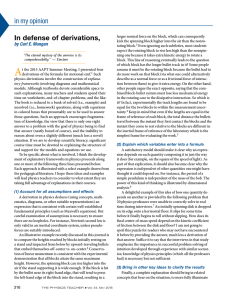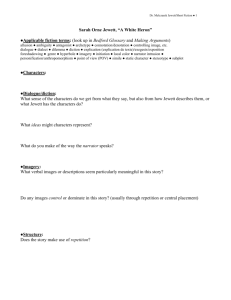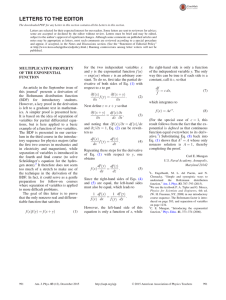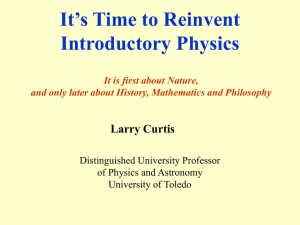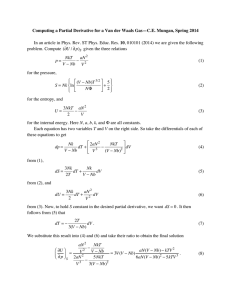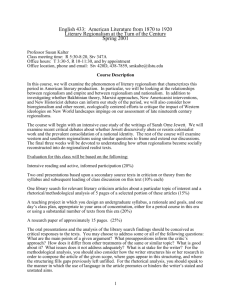Letters to the Editor Summer Challenges and Musings about Energy
advertisement
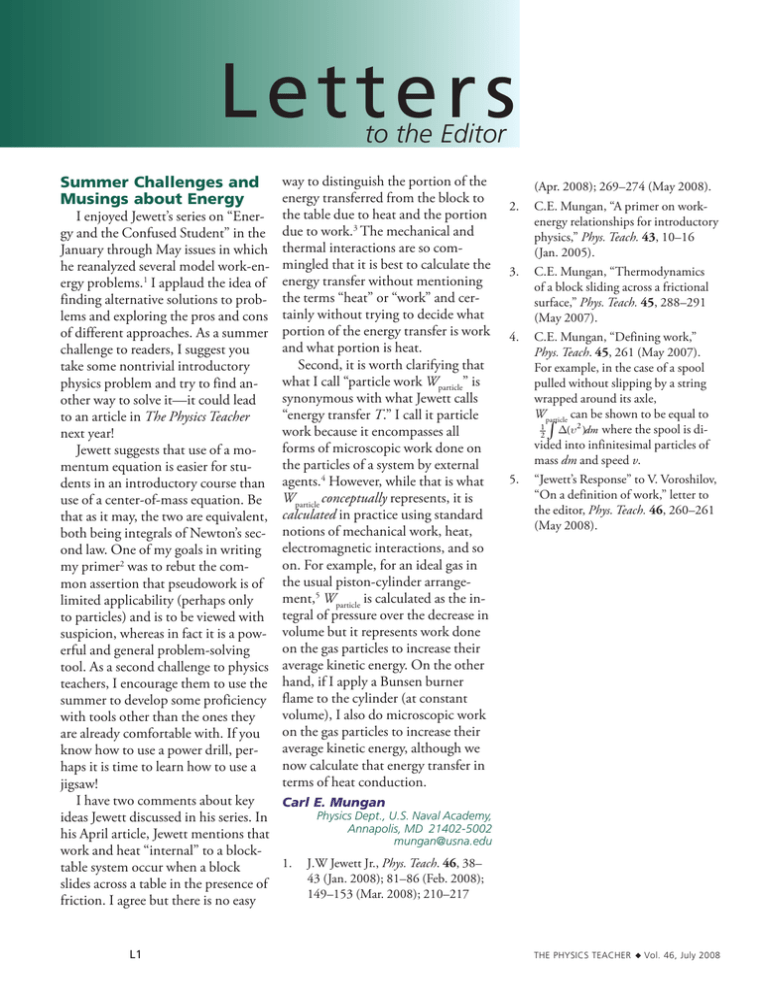
Letters to the Editor Summer Challenges and Musings about Energy way to distinguish the portion of the energy transferred from the block to the table due to heat and the portion due to work.3 The mechanical and thermal interactions are so commingled that it is best to calculate the energy transfer without mentioning the terms “heat” or “work” and certainly without trying to decide what portion of the energy transfer is work and what portion is heat. Second, it is worth clarifying that what I call “particle work Wparticle” is synonymous with what Jewett calls “energy transfer T.” I call it particle work because it encompasses all forms of microscopic work done on the particles of a system by external agents.4 However, while that is what Wparticle conceptually represents, it is calculated in practice using standard notions of mechanical work, heat, electromagnetic interactions, and so on. For example, for an ideal gas in the usual piston-cylinder arrangement,5 Wparticle is calculated as the integral of pressure over the decrease in volume but it represents work done on the gas particles to increase their average kinetic energy. On the other hand, if I apply a Bunsen burner flame to the cylinder (at constant volume), I also do microscopic work on the gas particles to increase their average kinetic energy, although we now calculate that energy transfer in terms of heat conduction. I enjoyed Jewett’s series on “Energy and the Confused Student” in the January through May issues in which he reanalyzed several model work-energy problems.1 I applaud the idea of finding alternative solutions to problems and exploring the pros and cons of different approaches. As a summer challenge to readers, I suggest you take some nontrivial introductory physics problem and try to find another way to solve it—it could lead to an article in The Physics Teacher next year! Jewett suggests that use of a momentum equation is easier for students in an introductory course than use of a center-of-mass equation. Be that as it may, the two are equivalent, both being integrals of Newton’s second law. One of my goals in writing my primer2 was to rebut the common assertion that pseudowork is of limited applicability (perhaps only to particles) and is to be viewed with suspicion, whereas in fact it is a powerful and general problem-solving tool. As a second challenge to physics teachers, I encourage them to use the summer to develop some proficiency with tools other than the ones they are already comfortable with. If you know how to use a power drill, perhaps it is time to learn how to use a jigsaw! I have two comments about key Carl E. Mungan Physics Dept., U.S. Naval Academy, ideas Jewett discussed in his series. In Annapolis, MD 21402-5002 his April article, Jewett mentions that mungan@usna.edu work and heat “internal” to a block1. J.W Jewett Jr., Phys. Teach. 46, 38– table system occur when a block 43 (Jan. 2008); 81–86 (Feb. 2008); slides across a table in the presence of 149–153 (Mar. 2008); 210–217 friction. I agree but there is no easy L1 (Apr. 2008); 269–274 (May 2008). 2. C.E. Mungan, “A primer on workenergy relationships for introductory physics,” Phys. Teach. 43, 10–16 (Jan. 2005). 3. C.E. Mungan, “Thermodynamics of a block sliding across a frictional surface,” Phys. Teach. 45, 288–291 (May 2007). 4. C.E. Mungan, “Defining work,” Phys. Teach. 45, 261 (May 2007). For example, in the case of a spool pulled without slipping by a string wrapped around its axle, Wparticle can be shown to be equal to 1 ∆(υ 2 )dm where the spool is di2∫ vided into infinitesimal particles of mass dm and speed v. 5. “Jewett’s Response” to V. Voroshilov, “On a definition of work,” letter to the editor, Phys. Teach. 46, 260–261 (May 2008). Making Use of Video Interlacing The article “When Two Balls Are Just One” [Phys. Teach. 46, 168-170 (March 2008)] has an interesting discussion about interlaced video. Unfortunately, one of the article’s conclusions (that WMV format is interlaced and AVI format is not interlaced) is wrong. A typical consumer-grade camcorder sold in the United States, such as the one the authors used, records interlaced video onto DV tape and sends it in interlaced DV format through an IEEE 1394 cable to a computer. When the video is captured in the computer, the capture application may save it as either interlaced or deinterlaced video, independently of whether the computer The Physics Teacher ◆ Vol. 46, July 2008

